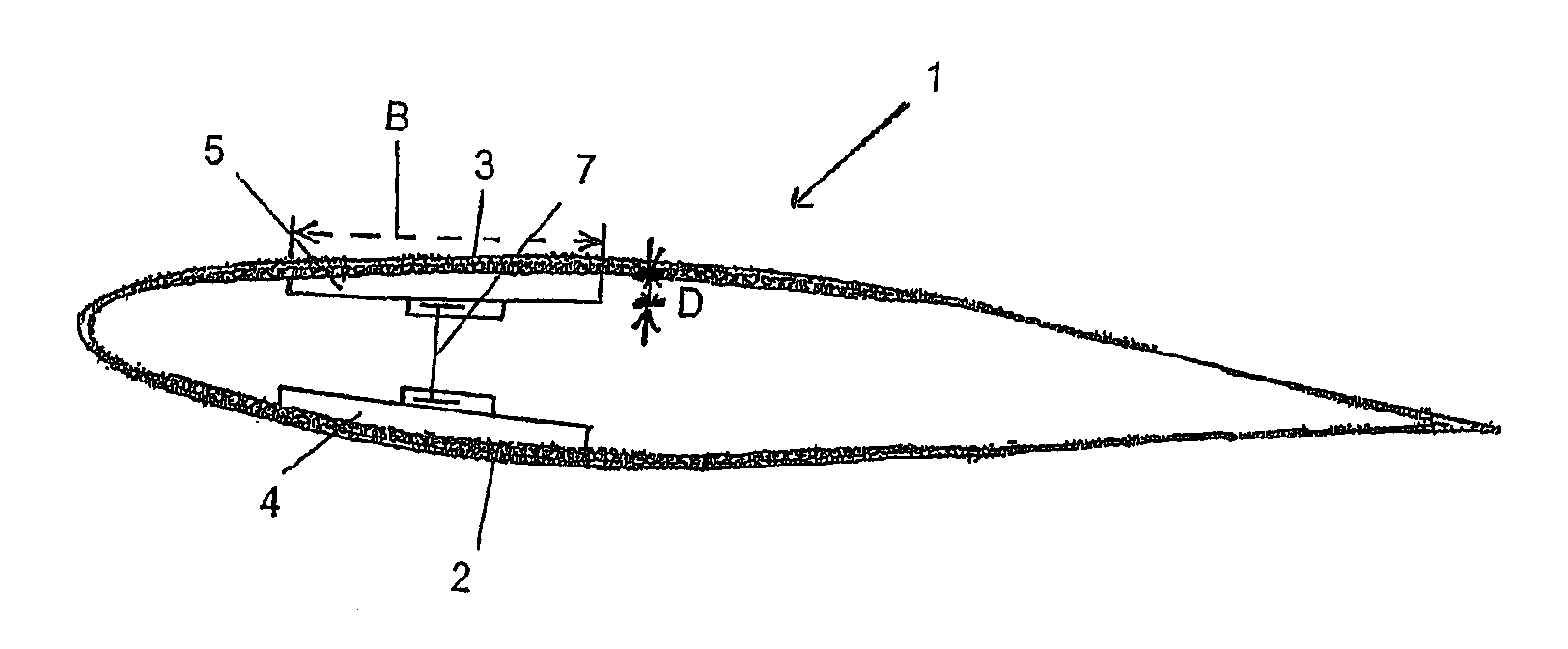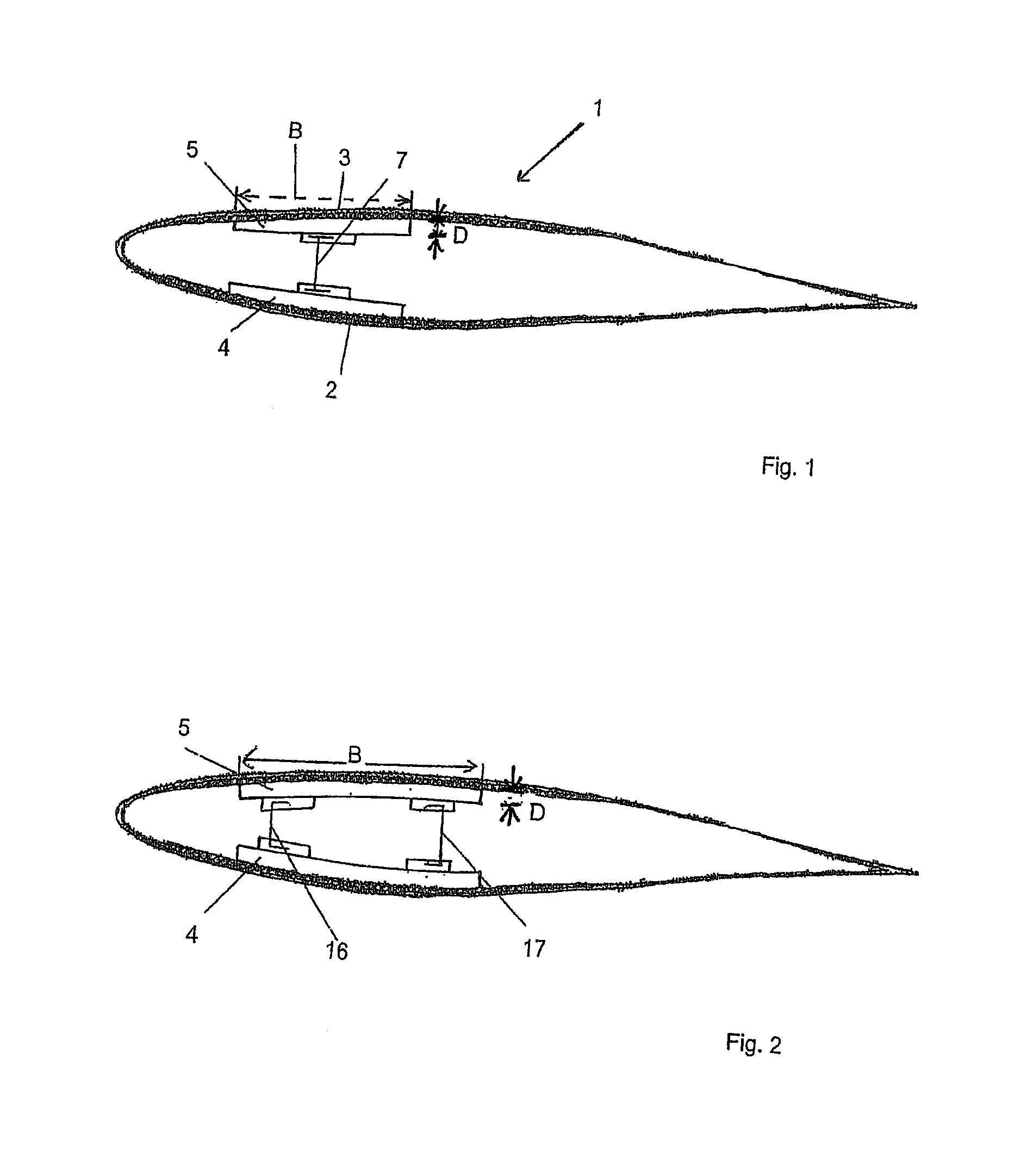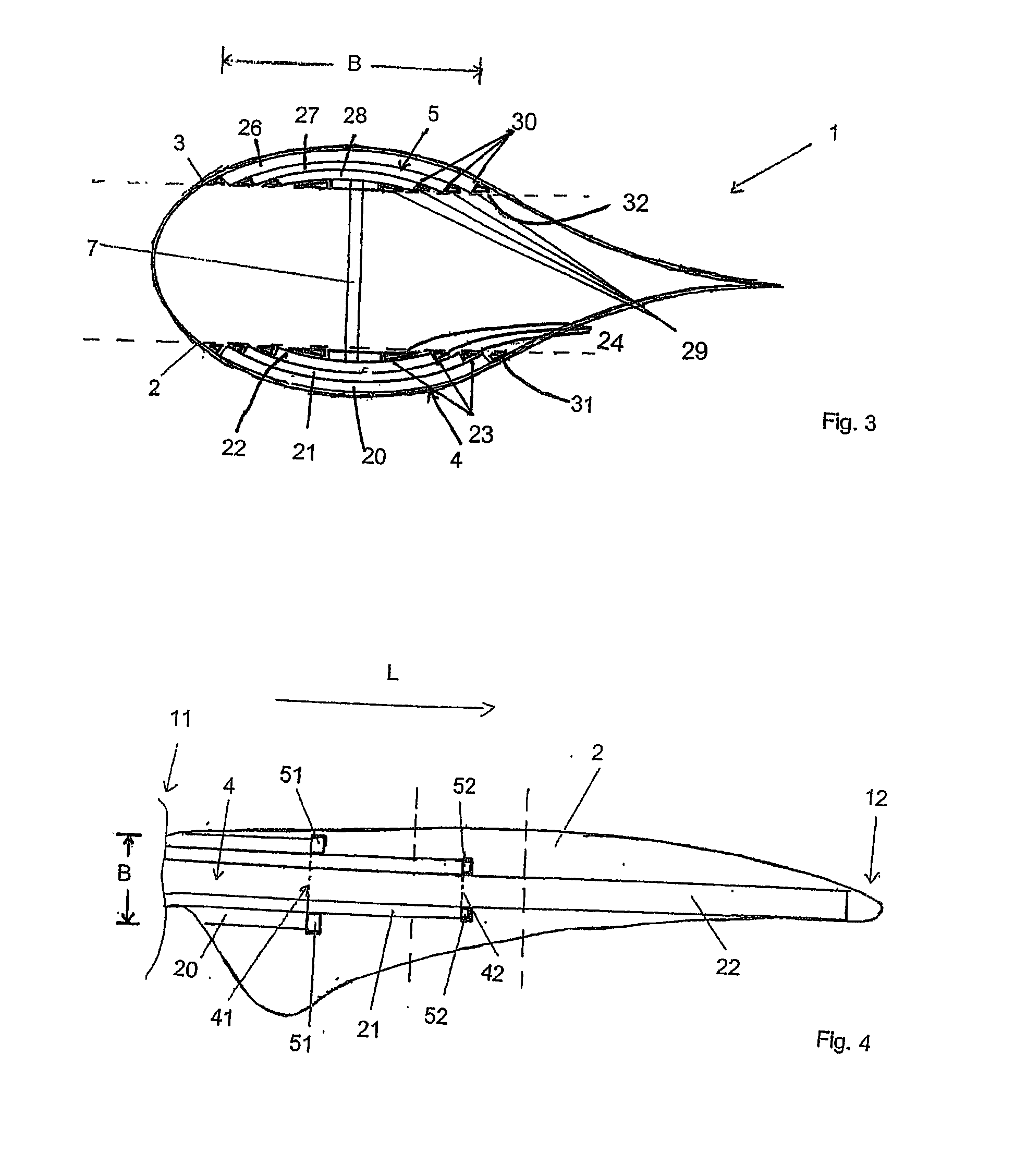Rotor blade and method for producing same
a technology of rotor blades and flanges, applied in the field of rotor blades, can solve the problems of flanges and webs themselves being endangered by bulges, achieving sufficient resistance to bulges, and so on, and achieves the effects of reducing width, less material, and increasing buckling resistance of rotor blades
- Summary
- Abstract
- Description
- Claims
- Application Information
AI Technical Summary
Benefits of technology
Problems solved by technology
Method used
Image
Examples
Embodiment Construction
[0015]“Longitudinal direction” denotes here a direction from the rotor blade root toward the rotor blade tip. No distinction is made in the following between a longitudinal direction of the flange, of the rotor blade half skin or of the rotor blade. They should be considered here as coincident.
[0016]“The width of the flange” denotes in the following the extent of the flange transversely to the longitudinal direction, preferably vertically to the longitudinal direction. “Transverse direction” also denotes a direction transverse to the longitudinal direction, preferably vertically to the longitudinal direction.
[0017]Experience has shown that rotor blade blades area endangered by bulges in particular in the area of the rotor blade root. Therefore, in order to increase the buckling resistance, flanges which are especially wide along the inner rotor blade sections are necessary. “Outer” and “inner” denote here and in the following the position of the rotor blade section or of the particu...
PUM
| Property | Measurement | Unit |
|---|---|---|
| lengths | aaaaa | aaaaa |
| height | aaaaa | aaaaa |
| width | aaaaa | aaaaa |
Abstract
Description
Claims
Application Information
 Login to View More
Login to View More - R&D
- Intellectual Property
- Life Sciences
- Materials
- Tech Scout
- Unparalleled Data Quality
- Higher Quality Content
- 60% Fewer Hallucinations
Browse by: Latest US Patents, China's latest patents, Technical Efficacy Thesaurus, Application Domain, Technology Topic, Popular Technical Reports.
© 2025 PatSnap. All rights reserved.Legal|Privacy policy|Modern Slavery Act Transparency Statement|Sitemap|About US| Contact US: help@patsnap.com



